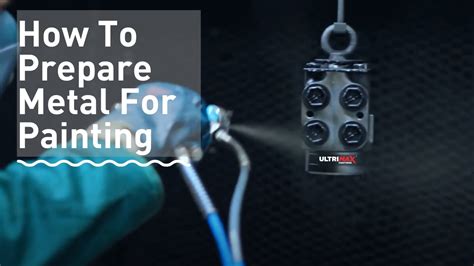How To Prep Steel For Painting
Ronan Farrow
Mar 25, 2025 · 4 min read

Table of Contents
How to Prep Steel for Painting: A Comprehensive Guide
Painting steel might seem straightforward, but achieving a long-lasting, professional-looking finish requires meticulous preparation. Skipping this crucial step can lead to premature peeling, rust, and an overall disappointing result. This guide will walk you through the essential steps to properly prep steel for painting, ensuring a durable and aesthetically pleasing outcome.
Understanding the Importance of Steel Preparation
Before diving into the process, let's understand why proper preparation is paramount. Steel, if not treated correctly, is susceptible to rust and corrosion. Rust acts as a barrier, preventing the paint from adhering properly. This leads to paint failure, requiring costly repainting and potentially more extensive repairs. Thorough preparation is the key to a successful and long-lasting paint job.
Step-by-Step Guide to Steel Prep for Painting
This process involves several key stages:
1. Cleaning the Steel Surface
This is arguably the most important step. A clean surface ensures optimal paint adhesion. The cleaning method depends on the condition of the steel:
-
Removing Loose Rust and Paint: Use a wire brush (manual or power), scraper, or sandpaper to remove all loose rust, flaking paint, and other debris. For larger areas, consider using a power tool like a wire wheel or angle grinder with a wire brush attachment. Safety glasses and a dust mask are essential during this step.
-
Washing the Steel: After removing loose material, thoroughly wash the steel surface with a suitable degreaser or detergent and water. A pressure washer can be helpful for removing stubborn dirt and grime, but be mindful of not damaging the steel surface. Rinse thoroughly and allow the steel to dry completely.
2. Removing Rust Completely
Even after initial cleaning, microscopic rust particles may remain. These can compromise the paint's adhesion. Consider these options for thorough rust removal:
-
Chemical Rust Removers: These are effective for removing rust without damaging the underlying steel. Follow the manufacturer's instructions carefully.
-
Sandblasting: For heavily rusted steel, sandblasting offers the most thorough rust removal. However, this method requires specialized equipment and safety precautions.
3. Priming the Steel
Priming is crucial for preventing rust and providing a strong bonding surface for the topcoat. Choose a primer specifically designed for steel. Apply the primer in thin, even coats, allowing each coat to dry completely before applying the next.
4. Applying the Topcoat
Once the primer is dry, you can apply your chosen topcoat. Again, apply thin, even coats, allowing sufficient drying time between coats. The number of coats required will depend on the type of paint and desired finish.
5. Maintaining Your Painted Steel
Even with proper preparation, maintaining your painted steel is crucial for longevity. Regularly inspect for any signs of rust or damage and address them promptly.
Choosing the Right Tools and Materials
The success of your steel preparation heavily relies on selecting the correct tools and materials:
- Wire Brushes: Choose brushes appropriate for the scale of your project.
- Scrapers: Various types of scrapers exist for removing stubborn paint and rust.
- Sandpaper: Different grits for various levels of surface refinement.
- Degreaser/Detergent: Select a product designed for removing grease and grime from metal surfaces.
- Primer: Choose a rust-inhibiting primer specifically for steel.
- Paint: Select a durable paint suitable for outdoor or indoor use, depending on your project’s location.
Frequently Asked Questions (FAQ)
Q: Can I skip the priming step?
A: No, priming is crucial for preventing rust and ensuring proper paint adhesion. Skipping this step will significantly reduce the lifespan of your paint job.
Q: What is the best way to remove heavy rust?
A: For heavy rust, sandblasting is the most effective method, but it requires specialized equipment and safety precautions. Chemical rust removers are a viable alternative for smaller areas.
Q: How long should I wait between coats of paint?
A: Always follow the manufacturer's instructions on drying times for both primer and topcoat. This will ensure proper adhesion and prevent issues with the finished product.
By following these steps and selecting the appropriate tools and materials, you can effectively prepare steel for painting, resulting in a durable and attractive finish that will last for years to come. Remember safety first! Always wear appropriate protective gear when working with metal and chemicals.
Featured Posts
Also read the following articles
| Article Title | Date |
|---|---|
| How To Keep A Beer Keg Cold | Mar 25, 2025 |
| How To Measure Male | Mar 25, 2025 |
| How To Prove Adultery In South Carolina | Mar 25, 2025 |
| How To Remove Tooth Crown At Home | Mar 25, 2025 |
| How To Remove Outboard Boat Motor | Mar 25, 2025 |
Latest Posts
Thank you for visiting our website which covers about How To Prep Steel For Painting . We hope the information provided has been useful to you. Feel free to contact us if you have any questions or need further assistance. See you next time and don't miss to bookmark.
